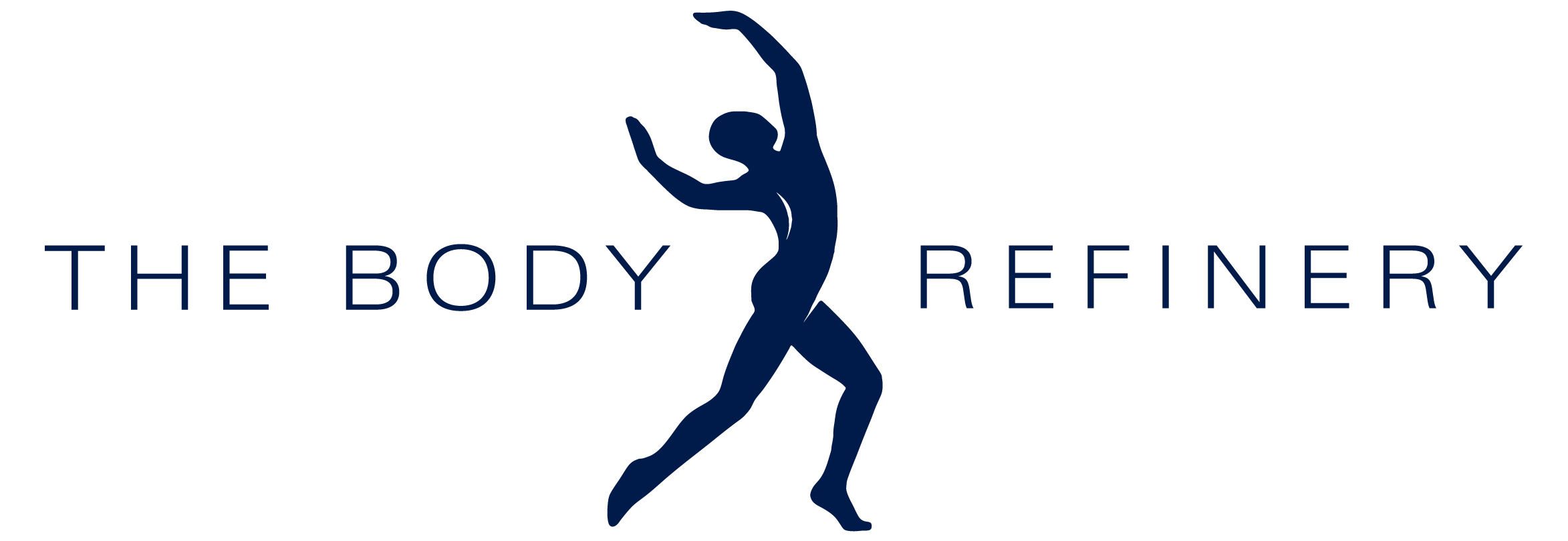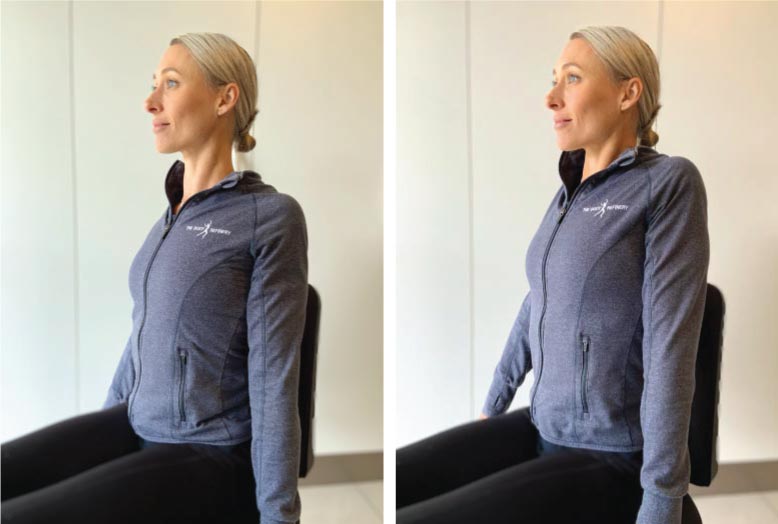Your posture during screen time
Have you heard of the chin poke posture or forward head posture, or text neck? As their name suggests it is the position we find ourselves forming when we’re deep into a solid Netflix binge, IG scroll session or when we’ve been concentrating hard at work or study. It looks like chin poking out, and hunched shoulders, arms out in front on a keyboard or holding or devices.
No judgement friends, only care.
If this is you (let’s be honest, it’s all of us right?!) this blog is here to help.
Here are a few ways you can minimise getting a sore neck and shoulders, along with some remedies if you’ve already gone too hard with screen time and need some smoothing out.
Why does it hurt and what’s the problem with being in this posture?
So glad you asked.
Technically forward head posture means your skull is leaning forward a few to several centimetres in front of the midline of your body – your ears are not lining up with your shoulders. You can test this by standing against a wall: does your butt, upper back and back of the headline up nice and easily on the wall? If not…forward head posture.
Gravity plays a huge role in how the body changes from prolonged postures. In this case, because the head isn’t stacked nicely on top, the weight of your head increases load through your neck and upper back joints and tissues, for every couple of centimetres your head is forward, there is approximately an additional 4.5kg of weight placed through these areas, potentially leading to stiffness and dysfunction, including headaches and soreness in the neck and upper back.
Additionally, lengthening and weakness occur to the ‘core’ muscles at the front of the neck, the postural muscles through the upper back, between the shoulder blades and at the back of the shoulders. While shortening and tightness affect other muscle, including at the base of your head and chest muscles. This can create dysfunction and discomfort in addition to reducing the strength and endurance to hold your head and upper back upright.
Further to this, other muscles can compensate for those that are weakened but can end up overactive, often becoming the cause of headaches and discomfort between the shoulder blades. Our ability to breathe properly and deeply is reduced, thus there can be reduced oxygen in our system and muscles – we can feel de-energised and achy around our fatigued postural muscles. The jaw alignment is not ideal in head forward posture, potentially leading to tightness and dysfunction. And upper body alignment in this posture can affect shoulder range and function.
How to avoid this
Take regular reset and movement breaks. If you can commit to this for a couple of weeks, you will increase your body awareness, improve postural strength, improve mobility and reduce tension. And you will be likely to continue this behaviour as it will become a habit.
Here are some stretch suggestions:
5-10 second Reset breaks regularly – do a quick body scan
- Sitting up from the sit bones, even pressure through both sides of your seat, spine upright in a neutral position- hopefully supported by a good chair, both feet on the ground, head sitting on top of shoulders. Shoulders relaxed, neck long and relaxed.
- Take a few deep, slow breaths in through the nose, down into the abdomen, expanding outwards into the lower ribs and up into the chest. Then slowly breathe out fully, pausing for a moment before the next breath.
Movement breaks
Mobility – Increase blood flow around the joints and tissues and improve the movement of the spine to make sitting upright easier.
In your seat:
- T-spine extension – Sitting up tall in your chair, extend back over the backrest, breathe in and exhale to return. Do several, they feel good!
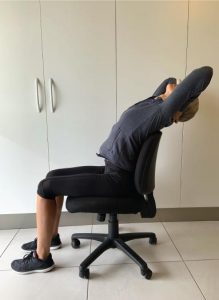
- Mermaid – take your left hand out to the side, inhale, exhale as you curve your upper back in a C shape to open the ribs, reaching your arm overhead. Do at least 6 repetitions on each side.
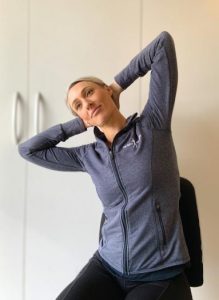
- Bow and arrow – reaching arms in front, shoulder width and height reach one arm forward rotating your spine with it as you pull the other arm back like a bow and arrow, you’re aiming to rotate your upper body while keeping the hips square. Do at least 6 repetitions on each side.
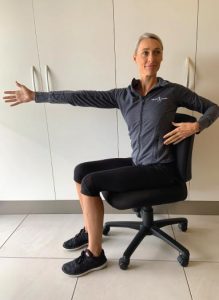
- Shoulder rolls – get the blood flowing around your shoulder muscles by circling the shoulders forward 6 times and back 6 times.
Postural Strengthening
This will help you find a good posture with ease and have the endurance to maintain it. It will also allow to decrease the aching pain around your neck, shoulders and upper back.
- Cervical retractions – sitting up tall, draw the head back w a gentle chin tuck as if you were trying to get a double chin. Hold for a few seconds. You can progress this to standing against a wall and retracting your head to press the back of it against the wall for a few seconds. Or coming into 4 point kneeling and adopting the same retracted position through the head and neck and holding against gravity for several seconds before relaxing. Repeat 10 times
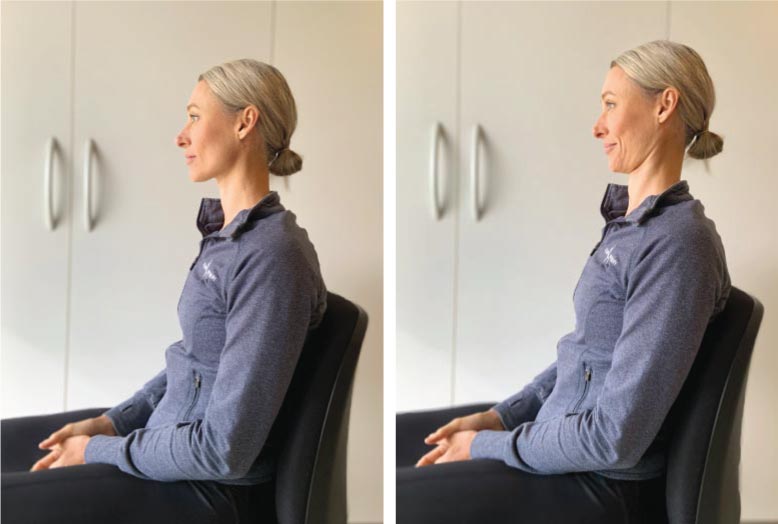
- Bruggers- sitting tall, take your arms in an A shape, Extend the arms back behind you, Rotate the crook of the elbow to face out, thumbs back and palms out. Squeeze in between the shoulder blades and hold for 30 sec to 1 min, 3-4 times, increasing a little more in time or sets as the weeks go on.
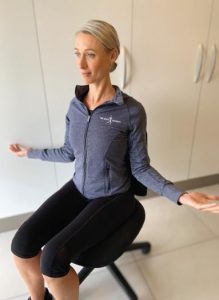
- Theraband rows – if you have a resistance band, tie it around something steady and about at navel level or higher. Hold the ends and pull the elbows back like you’re rowing. 15 – 20 reps.
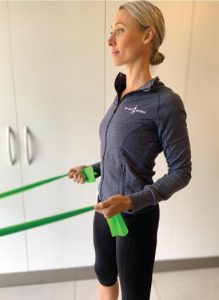
- Dart – laying on the ground face down, arms along your side, extend your upper back, lifting your chest and upper ribs off the ground. Roll the shoulders back to open the chest, lift the arms off the ground and squeeze them up to the ceiling as you pull the shoulder blades together, hold for a few moments and lower. Repeat 5-6 times.
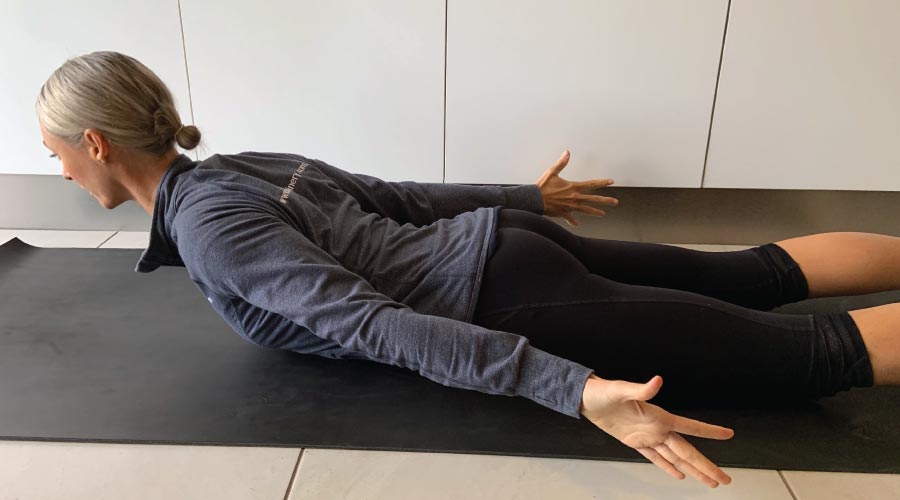
Stretching
Decrease tightness and tension in shortened muscles.
- Hip flexor stretch – Stand in a lunge position and as you drop your back knee toward the ground, tuck your bottom under and press the hips forward at the same time.
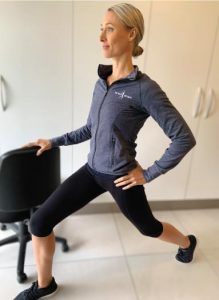
- Pectoralis major and minor stretch – Stand side on to a wall or door frame, place your forearm vertically on the wall or door frame with your elbow slightly above the shoulder, step forward with the body until you feel a stretch in your chest. Also in the door frame, slide your arm vertically up the wall until your elbow is higher than your head and walk forward until you get a comfortable, but deep stretch in the chest
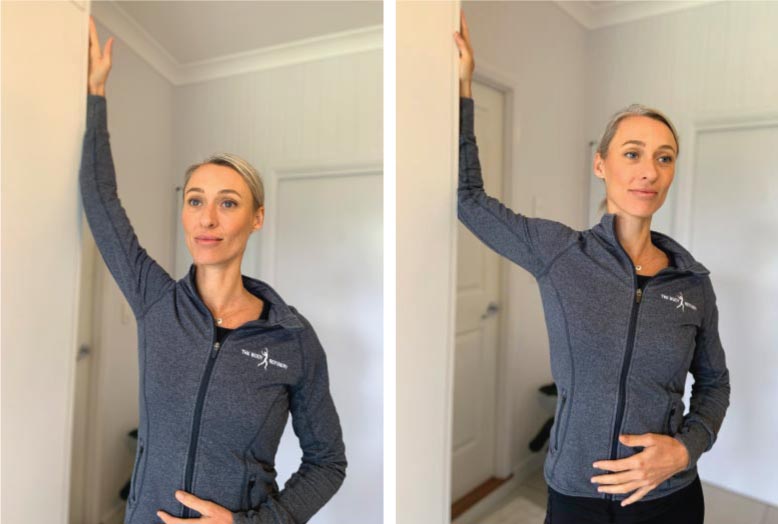
- Upper cervical stretch – Tuck your chin in and tip your nose toward your chest, you can add some gentle assistance with your hand to deepen the stretch.
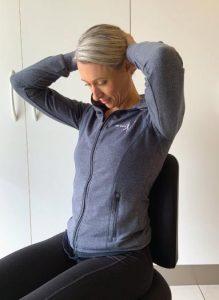
Further help is available at The Body Refinery
At The Body Refinery, we have a great team of movement and health professionals to help you further. Our physios are trained in headache assessment and treatment. You can book in for a massage to reduce tension and stiffness and restore muscle function and movement. And you can boost your strength, stability and mobility with our varied movement options – work out at home with our live virtual classes or your own membership to The Body Refinery Online. Come in for greater attention to your form and a tailored movement session with our Exercise Physiologist, Pilates Instructor or in a physio run clinical rehab session.
